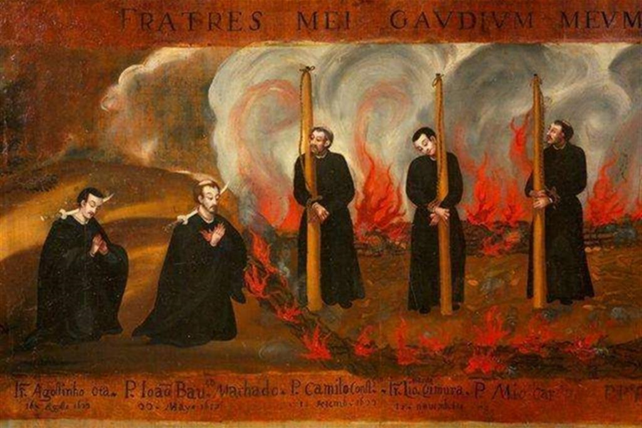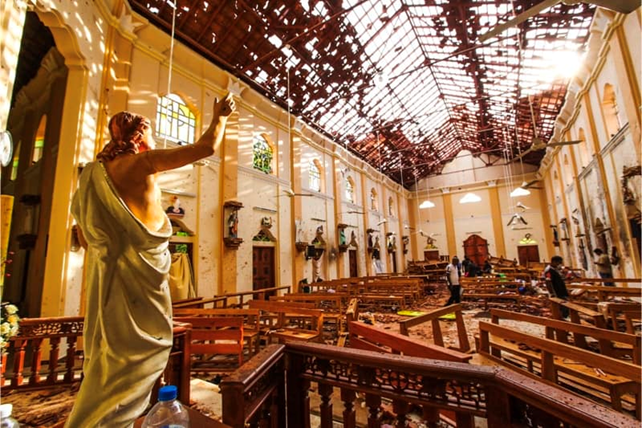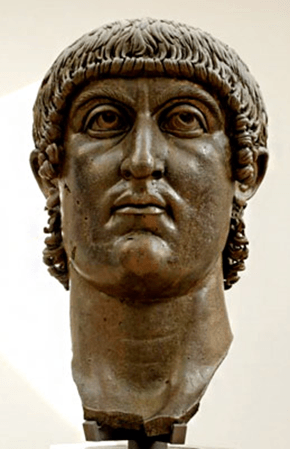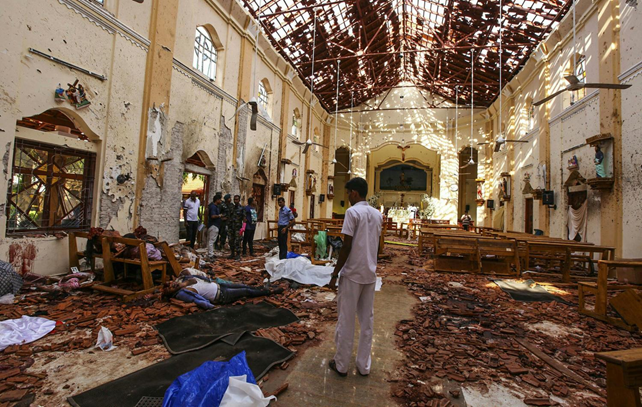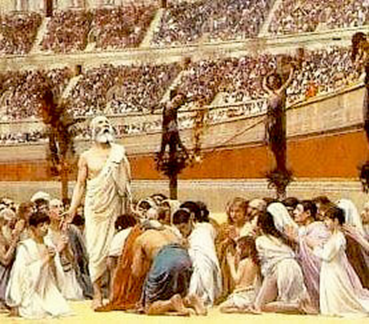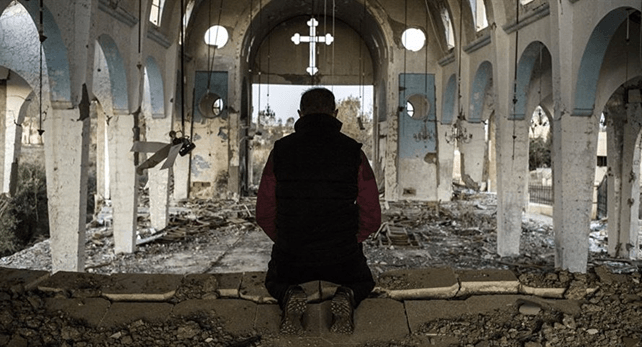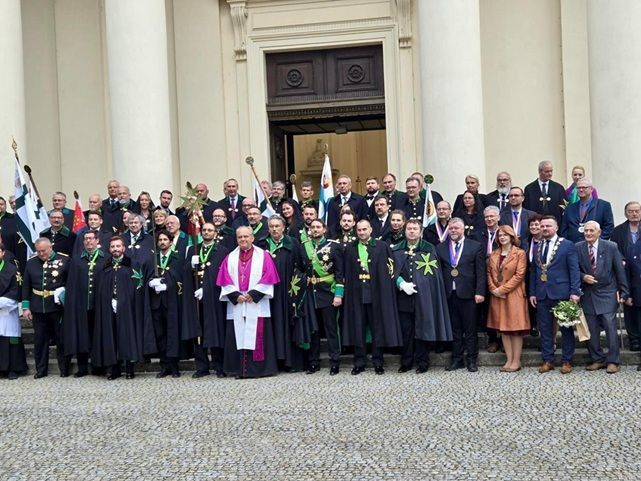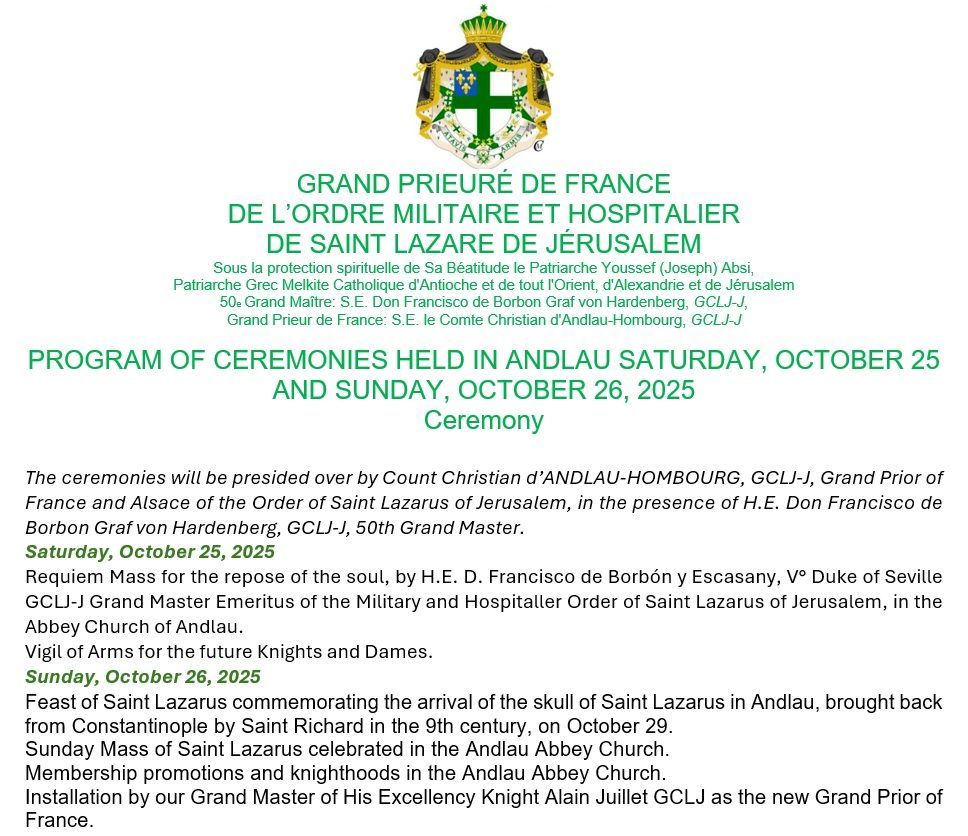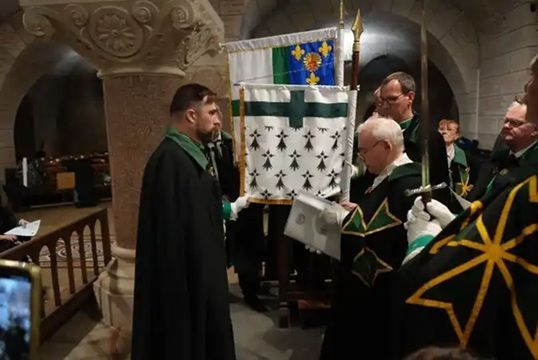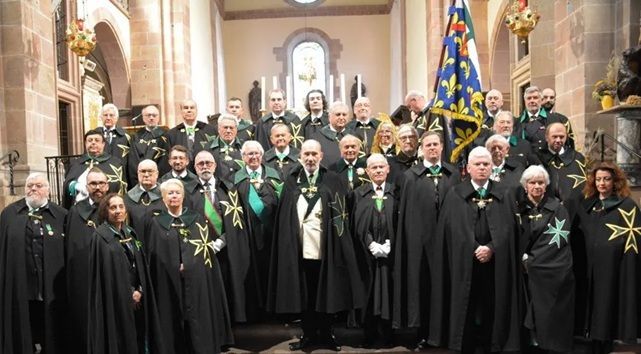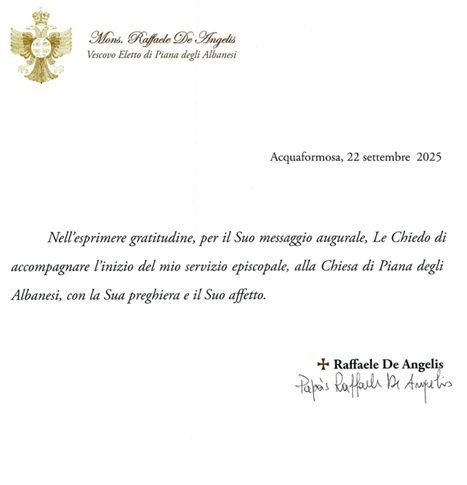COSTANTINO NON ARRIVA!
COSTANTINO NON ARRIVA!
(LE SFIDE DI ESSERE CHIESA IN UNA CULTURA ANTAGONISTA)

(Flavius Valerius Constantinus, Pius Felix Invictus Maximus, Germanicus Maximus IV, Sarmaticus Maximus III, Gothicus Maximus II, Dacicus Maximus, Adiabenicus, Arabicus Maximus, Armeniacus Maximus, Britannicus Maximus, Medicus Maximus, Persicus Maximus.)
LA STORIA SI RIPETE!
Fin dai tempi apostolici, l'espressione spesso usata per identificare coloro che seguivano Gesù Cristo di Nazareth era come uno che seguiva "La Via". Nel primo secolo dopo la morte e la risurrezione di Gesù, questi seguaci della Via testimoniavano Gesù e i suoi insegnamenti con le loro labbra e le loro vite, mentre venivano trasformati dalla sua morte e risurrezione. Questi individui erano così soggiogati che i suoi amici più stretti vagarono per quella parte del mondo e fondarono comunità cristiane in lungo e in largo, piantando i semi del cristianesimo per le generazioni future anche durante le grandi persecuzioni.
La persecuzione dei cristiani non era un atto automatico, nonostante ciò che alcuni possono pensare. Il fatto è che le nuove religioni e i culti non erano automaticamente un problema. I romani si preoccupavano del cristianesimo perché lo percepivano come sovversivo, dato che la maggior parte dei cristiani, una volta convertiti, non partecipavano alla vita religiosa pubblica dell'impero. Si sforzavano di essere "stranieri residenti", il che significa che la comunità cristiana non aveva bisogno dell'apparato sociale e politico dell'impero romano per il suo significato e scopo. La sua raison d'être non si trovava nelle strutture dell'Impero. Quando i cristiani si riunivano per il culto, le riunioni erano chiuse a coloro che non erano di fede e quindi venivano percepite come una riunione segreta che sollevava ulteriori sospetti. Forse questo è meglio illustrato nella corrispondenza di Plinio il Giovane nell'anno 112. Facendo un giro per conto di Traiano, chiese come dovevano essere trattati i cristiani. L'imperatore ha esortato a punire coloro che sono accusati di tradimento o sovversione dai loro vicini con prove concrete in mano. Questo tipo di tolleranza sarebbe rapidamente caduto nel dimenticatoio e la persecuzione aggressiva sarebbe durata fino ai giorni di Costantino.
Si presume spesso che la persecuzione avrebbe unito le comunità cristiane nel pensiero e negli scopi. Mentre c'è molta verità in questo per quanto riguarda le opere di carità, nei primi giorni della chiesa non c'era unità di pensiero su ciò in cui si credeva e su come la chiesa sarebbe andata avanti. Mentre le varie eresie e controversie non dovrebbero essere facilmente liquidate, si dovrebbe notare che abbiamo chiuso il cerchio. Mentre l'attuale divisione di pensiero e di intenti può non riguardare la natura di Dio, c'è ancora la minaccia di nuovi pensieri su come essere un cristiano derivanti da un affidamento alla teoria sociale piuttosto che alla teologia. Inoltre, l'antagonismo della cultura era chiaramente da una fonte primaria nei primi giorni, mentre oggi l'assalto viene da diversi formidabili nemici. Sempre più spesso, come nei primi tre secoli, la chiesa attuale non possiede una base chiara per inquadrare come essere semplicemente un cristiano. Perché come allora e come adesso ci sono voci discordanti sia all'interno che all'esterno della chiesa che rendono l'essere un seguace della "Via" più complesso che semplice.
QUALI SONO LE PAROLE GIUSTE PER DOVE SIAMO?
Ci sono numerosi aggettivi per descrivere lo spostamento dalla visione del mondo impregnata di teologia e immaginario cristiano che ha creato gran parte del pensiero filosofico, etico, politico ed educativo degli ultimi 600 anni. Per alcuni risuona il termine "post-cristiano", suggerendo che il mondo era cristiano nella sua valutazione e ora se ne è liberato. Questo forse ha valore in Occidente, ma meno nel Sud del mondo. Per altri, il termine "secolare" dal latino "saeculum" che significa "di una generazione, alla fine adattato a significare del mondo distinto dalla chiesa. Remi Brague suggerisce che questo termine è un po' una sciocchezza perché l'ideale di laicità è subordinato alla fioritura della società. Sembra però che senza una visione trascendente del mondo la storia dimostra che la società non fiorisce (per esempio, l'ascesa e la caduta del comunismo). Sembra che sia giunto il momento di riconoscere che siamo di fronte a qualcosa di piuttosto virulento, e dovremmo semplicemente chiamarlo per quello che è....Antagonismo Ateo. Quelli della Chiesa cristiana devono riconoscere e strategizzare che questa visione è molto al di là dell'idea secolare che le considerazioni religiose dovrebbero essere escluse dagli affari civili o dall'educazione pubblica. Il defunto Kenneth Minogue, professore emerito di scienze politiche alla London School of Economics, suggerì nel 2003 che questa visione del mondo partiva da semi di cristofobia (cfr. Christo phobia" and the West di Kenneth Minogue, New Criterion, giugno 2003). La paura si è trasformata in un antagonismo che cerca non solo di escludere, ma di esorcizzare ed estromettere dal flusso e riflusso ordinario della vita. Oltre ad affrontare questa minaccia, la chiesa affronta l'ascesa del fondamentalismo islamico radicale.
Coloro che professano questa espressione dell'Islam cercano un Islam autoritario dove si dovrebbe essere costretti ad abbracciare le tradizioni del Profeta Maometto e come risultato creare un mondo in cui l'Islam è la visione del mondo dominante dove tutti i governi dovrebbero essere posti sotto la shari'a e l'hadith. Per raggiungere questo obiettivo, "ogni forma esistente di autorità deve essere sostituita con il dominio della legge islamica". Mentre noi nella Chiesa occidentale possiamo non sentire le pressioni di questo, le comunità cristiane orientali come i siriani e i copti lo affrontano quotidianamente. Poiché fanno parte della Chiesa cattolica, le loro sfide sono le nostre (Matt 25:31-46). Dobbiamo comportarci come tali!
Non tutte le forze che sfidano il futuro stesso della Chiesa cattolica sono esterne. Anche le forze dall'interno della chiesa offrono una minaccia significativa. Una è il consumismo cristiano. Il Vangelo del consumismo ha trovato una casa accanto al Vangelo di Cristo. "Church Shopping" e "cosa ne ricaverò?" sono criteri fondamentali per il perché e il come le persone possono partecipare alla chiesa e noi nella chiesa a nostra volta ci rivolgiamo a questi punti di vista quando creiamo ministeri della chiesa per soddisfare i desideri dichiarati creando un Wal-Mart ecclesiastico. Le persone nella cultura scelgono le chiese che si adattano a quelle che sono le loro esigenze di shopping per il momento, con la loro lista di preferenze in mano, proprio come si sceglierebbe una macchina o un nuovo paio di jeans.
Le mega chiese si sono adattate a questo e hanno spremuto le comunità di fede Mom-and-Pop (con questo intendo quelle chiese locali con una partecipazione inferiore a 50-100). Le chiese storiche che professano la fede cattolica devono parlare con la stessa audacia contro questo tipo di cristianesimo e dimostrare che la comunità di fede è dove i membri di un corpo si riuniscono per scopi che vanno oltre se stessi! La vocazione del Corpo di Cristo è una chiamata a unirsi a Cristo in ciò che sta già facendo nel mondo, non è un invito per Cristo ad affermare la nostra auto-realizzazione con un'appropriata colonna sonora cristiana.
Questa mentalità consumistica alleva anche la propria spiritualità, che è una spiritualità dell'autonomia al di sopra della comunità. Mentre le minacce esterne sono significative, la minaccia interna di una spiritualità dell'autonomia crea una mentalità pervasiva che gli individui sono gli unici arbitri e ingegneri della loro identità, moralità e destino. Il "sii e fai quello che ti sembra giusto", purché sia cristiano, è semplicemente una filosofia di individualismo espressivo che è fondamentalmente in contrasto con il cristianesimo, che ci chiama a inchinarci alla signoria di Cristo e all'umiltà nella comunità. Le chiese devono contrastare questo, e chiamare i membri della comunità di fede a sottomettersi a una spiritualità che è trascendente e comunitaria in opposizione a quella immanente e autodeterminata.
Poiché le persone si allontanano dagli sforzi di costruire il corpo di Cristo attraverso la comunità e cercano la propria ricerca individuale, la chiesa si troverà di fronte a una diminuzione delle risorse: spirituali, temporali e umane. Alcune denominazioni stanno affrontando non solo la continua diminuzione delle risorse e delle persone, ma la possibilità di estinzione. Per esempio, se l'attuale tasso di declino non viene arrestato, la Chiesa Metodista del Regno Unito avrà zero membri entro il 2037, mentre la Chiesa di Scozia chiuderà la sua ultima congregazione nel 2033. Chiaramente, la minaccia che stiamo affrontando non è solo delle comunità di fede locali, ma quella di particolari chiese in tutto il mondo. Con le minacce esterne combinate con i dinamismi interni, la chiesa cattolica in Occidente deve ripensare a come svolge il lavoro di proclamare la fede una volta consegnata ai santi.
ECCLESSIOLOGIA ECUMENICA DI FRONTE ALL'ANTAGONISMO
In vista del ministero in un mondo che sta attraversando una pandemia dove la fede non è stata necessariamente rafforzata e dove la testimonianza della chiesa è stata trovata carente, è chiaro che un nuovo approccio alla testimonianza cristiana da parte delle chiese storiche è necessario se ci deve essere un rinnovamento che sia coinvolgente ed ecumenico per la chiesa e la faccia della terra. È tempo di un "ecumenismo carismatico" che chiami ogni tradizione cristiana storica a riconoscere i propri carismi come espressione della chiesa cattolica, al fine di offrire un elemento costitutivo per una rinnovata espressione di communio. Si tratta di un'invenzione in due parti in cui si cerca di imparare gli uni dagli altri ma anche di contribuire alla tradizione dell'altro. "L'espressione carismatica richiesta qui è quella di creare ciò che Margaret O'Gara chiama un mosaico, dove ogni pezzo è prezioso, e ogni pezzo è necessario per il quadro completo dell'unica chiesa di Cristo".
Con la continua frattura delle varie espressioni della fede cattolica che è la nostra realtà vissuta, siamo oltre il tentativo di salvaguardare noi stessi e i nostri feudi ecclesiastici individuali. C'è poca scelta se non quella di immaginare un futuro preferenziale per coloro che rivendicano una proclamazione ortodossa della fede per creare un'espressione della chiesa cattolica in comunione dinamica con gli altri!
Come spiega l'ecumenista Paul Murray nel suo trattato sull'Accoglienza: "Perché questo accada è necessario assumersi la responsabilità, prendere l'iniziativa, ... indipendentemente dal fatto che gli altri siano pronti a ricambiare". Una tale espressione permetterebbe per esempio ai cattolici non papali (luterani scandinavi, ortodossi, vecchi cattolici ortodossi e anglicani) di unirsi con quei doni unici. È un tale approccio unitario che parlerebbe a quelli nelle nostre chiese così come alla Chiesa di Roma come espressione della fede cattolica che cerca di riconquistare ciò che il mondo ha perso. Come comunità di fedeli cristiani, tale ecumenismo carismatico offrirebbe al mondo un modello collegiale di clero e laici in grado di attenersi a principi di vita ecclesiale che costruirebbero il Corpo di Cristo pur funzionando come organismi sui iuris. Se ci fossero chiese cattoliche storiche coraggiose e disposte ad affrontare le sfide a portata di mano, esse potrebbero offrire al mondo un'unica espressione locale della Chiesa, cercando allo stesso tempo di testimoniare il concetto di essere una comunione ecumenica cattolica che ontologicamente e temporalmente partecipa alla vita comune della Chiesa locale proprio come faceva la Chiesa apostolica e patristica prima dell'arrivo di Costantino.
Questo ecumenismo carismatico è essenziale per il futuro della Chiesa, poiché non c'è nessun imperatore dei giorni nostri che chiamerà le Chiese a riunirsi in concilio e ad affrontare le sfide del giorno. Non c'è nessun imperatore che legittimerà la Chiesa e le darà un posto di rilievo nel mondo come lo conosciamo! In questo approccio la Chiesa Una, Santa, Cattolica e Apostolica si manifesta come un'unica espressione di chiese, ognuna delle quali è sia una parte che un tutto. È una parte perché solo nell'unità con tutte le chiese e nel vivere le più piene doti può essere la Chiesa. Allo stesso tempo, è anche un tutto perché in ogni chiesa, in virtù della sua unità con la Chiesa Una, Santa, Cattolica e Apostolica, il Cristo è presente, la pienezza della grazia è data, la promessa biblica di vita nuova è rivelata.
L'ecumenicità carismatica di tutte le chiese come Chiesa Una, Santa, Cattolica e Apostolica si esprime e si conserva nei doni dati per l'unità di fede, l'unità della struttura sacramentale e l'unità di vita. L'unità di fede ha la sua norma e il suo contenuto nella tradizione universale. L'unità della struttura sacramentale si conserva attraverso la successione apostolica, che è la continuità visibile e oggettiva della vita e dell'ordine della Chiesa nel tempo e nello spazio. L'unità di vita si manifesta nella preoccupazione attiva di tutte le chiese tra loro e di tutte insieme per la missione della Chiesa nel mondo.
La sfida per il futuro non è per le chiese che stanno lottando per aggrapparsi l'una all'altra e tenersi per la vita. C'è piuttosto l'opportunità di dare nuova vita ad alcuni degli elementi essenziali a cui coloro che hanno a cuore la fede cattolica hanno dato priorità, ma che si sono persi. Nel cercare di abbracciare un ecumenismo carismatico, dobbiamo essere consapevoli del fatto che nel costruire questo mosaico ci sono gli schemi di vita cristiana che hanno servito bene la comunità. Ma ci saranno nuovi colori aggiunti a questo mosaico che possono permettere una migliore donazione (forse questo è esemplificato nella Dichiarazione 3 del Quadrilatero di Lambeth dove l'Episcopato Storico è confermato pur essendo anche adattato localmente). A questo punto, se gli adattamenti che non cambiano l'essenza dell'essere chiesa cattolica non possono essere applicati, allora l'espressione della fede storica perderà completamente il suo colore. L'ecumenismo carismatico dovrebbe onorare la pienezza della storia della cattolicità e allo stesso tempo ricominciare da capo nel contesto di vivere in un'espressione ecumenica dell'essere chiesa che può affrontare le sfide dell'avversità e dell'antagonismo con le proprie doti e la propria storia senza chiedersi se arriverà un imperatore a salvare la situazione.
Senza Costantino all'orizzonte, il cambio di paradigma per essere dotati ma emarginati, è un'opportunità per offrire una testimonianza che farà sì che il mondo ne prenda atto. Nel suo saggio "From the Palace to the Streets", Steve Toshio Yamaguchi sostiene che il futuro della chiesa risiede nelle chiese immigrate e perseguitate che hanno dovuto imparare come sopravvivere e prosperare nelle strade, senza il favore dello stato. Il futuro della chiesa non sarà un cristianesimo di palazzo, dice Yamaguchi, ma un "cristianesimo di strada".
In epoche precedenti a quella attuale, l'identità nazionale e il cristianesimo si sono intrecciati con la cultura e i valori. Le identità nazionali e culturali erano associate a particolari tradizioni cristiane (ad esempio, la Chiesa greco-ortodossa). Mentre a un certo punto era plausibile che il culto e i costumi sarebbero diventati parte della vita comune, dato che varie culture occidentali avevano i loro Costantino per servire come campioni della fede (ad esempio, i monarchi europei), quel giorno è passato. Mentre le diverse identificazioni nazionali diventano parte di un crogiolo culturale occidentale, è ora chiaro che la parte integrale del cristianesimo nella cultura occidentale sta rapidamente scomparendo. Ora ai margini e rimosso dai palazzi degli imperatori e dei re, il cristianesimo non è più la forza di influenza nel mondo del pensiero e dell'azione dei governanti di questo mondo.
Gli edifici ecclesiastici si stanno svuotando. Il clero si dimena. L'importanza del nostro messaggio sta sprofondando in una relativa insignificanza in larga misura perché la Chiesa ha sperato che un Costantino stia arrivando. Egli non sta arrivando e noi nella Chiesa dovremmo essere grati; così da cogliere l'opportunità di essere veramente controculturali ad ogni livello della nostra esistenza forse per la prima volta dal periodo apostolico.
+ Kevin Francis Donlon, ECLJ, LLM. Ph.D
Vescovo Anglicano
CONSTANTANTINE IS NOT COMING!
(The Challenges of Being a Marginalized Church in an Antagonistic Culture)
(Flavius Valerius Constantinus, Pius Felix Invictus Maximus, Germanicus Maximus IV, Sarmaticus Maximus III, Gothicus Maximus II, Dacicus Maximus, Adiabenicus, Arabicus Maximus, Armeniacus Maximus, Britannicus Maximus, Medicus Maximus, Persicus Maximus.)
HISTORY IS REPEATING ITSELF!
Since apostolic times, the expression often used to identify those who followed Jesus Christ of Nazareth was as one who followed "The Way." In the first century following the Death and Resurrection of Jesus, these followers of the Way witnessed to Jesus and his teachings with their lips and their lives; as they were transformed by his death and Resurrection. So compelled were these individuals that his closest friends wandered that part of the world established Christian communities far and wide planting the seeds of Christianity fur future generations even during great persecution.
The persecution of Christians was not an automatic act despite what some may think. The fact is that new religions and cults were not automatically a problem. The Romans became concerned about Christianity because they perceive it as subversive given that most Christians once converted did not participate in the public religious life of the empire. They endeavored to be “Resident Aliens”, meaning that the Christian community did not need the social and political apparatus of the Roman Empire for its meaning and purpose. Its raison d'ê·tre was not found in the structures of the Empire[1]. As Christians gathered together for worship gatherings were closed to those not of the faith and thus perceived to be a secret gathering which raised suspicions further. Perhaps this is best illustrated in correspondence of Pliny the Younger in the year 112. In making a tour on behalf of Trajan, he asked how Christians should be handled. The emperor urged that he punish those who stand accused of treason or subversion by their neighbors with hard evidence in hand. This was type of toleration would quickly fall by the wayside and aggressive persecution would last until the days of Constantine[2].
It is often assumed that persecution would unite the Christian communities in thought and purposes. While there is much truth to that as it pertains to works of charity in the early days of the church there was not unity of thought about what was believed and how the church would move forward. While the various heresies and controversies should not be easily dismissed, it should be noted we have come full circle. While present division of thought and purpose may not be about the nature of God, there is still the threat of new thoughts on how to be a Christian resulting from a reliance on social theory rather than theology. Additionally, the antagonism of the culture was clearly from one primary source in the earliest of days, where today the assault comes from several formidable foes. Increasingly, as it was in the first three centuries the present church does not possess a clear basis to frame how to simply be a Christian. For as it was then and is now there are discordant voices both from inside and outside the church that make being a follower of “ the Way” more complex than simple.
WHAT ARE THE RIGHT WORDS FOR WHERE WE ARE?
There are numerous adjectives to describe the shift from the world view imbued with Christian theology and imagery that has created much of the philosophical, ethical, political, and educational thinking of the last 600 years. For some the term “Post-Christian” resonates, suggesting that the world was Christian in its valuing and now it has shed that. That perhaps has merit in the West but less so in the Global South. For others, the term “secular” from the Latin "saeculum" meaning “of a generation, ultimately adapted to mean of the world distinctive from the church. Remi Brague suggests that this term is a bit of a canard because the ideal of secularity is contingent upon society flourishing. It seems however without a transcendent world view history shows society does not flourish[3] ( e.g., the rise and fall of communism). It seems the time has come to recognize that we are facing something rather virulent, and we should simply name it for what it is.…Atheistic Antagonism. Those in the Christian Church must recognize and strategize that this view is far beyond the secular idea that religious considerations should be excluded from civil affairs or public education. The late Kenneth Minogue, Emeritus Professor of Political Science at the London School of Economics suggested in 2003 that this worldview was starting with seeds of Christo-phobia (cf. Christo phobia” and the West by Kenneth Minogue, New Criterion, June 2003). The fear has transformed to an antagonism that seeks to not just exclude but exorcise and extricate from the ordinary ebb and flow of life.
In addition to facing this threat, the church faces the rise of Radical Islamic Fundamentalism. Those who profess this expression of Islam seek an authoritarian Islam where one should be compelled to embrace the traditions of the Prophet Muhammad and as a result create a world in which Islam is the dominant worldview where all governments should be placed under shari’a and hadith. For this to be achieved, “every extant form of authority must be replaced with the rule by Islamic law[4]. While we in the Western Church may not feel the pressures of this, the Oriental Christian Communities such as the Syrians and Copts face this daily. As they are part of the Church catholic, their challenges are ours (Matt 25:31-46). We need to act like it!
Not all the forces that challenge the very future of the church catholic are external. Forces from within the church also offer a significant threat. One is Christian Consumerism. The Gospel of Consumerism has found a home alongside the Gospel of Christ [5] “Church Shopping” and “what will I get out of this?” are foundational criterial for why and how people may participate in the church and we in the church in turn cater to these very views as we create church ministries to meet the stated desires creating an ecclesiastical Wal-Mart. People in the culture choose churches that fit what their shopping needs are for the time with their checklist of preferences in hand just as one would choose a car or a new pair of jeans.
The Mega Churches have catered to this and have squeezed out the Mom-and-Pop faith communities (by this I mean those local churches with attendance of less than 50- 100). Historic churches that profess the catholic faith must speak as boldly against this type of Christianity and demonstrate that the faith community is where members of a body come together for purposes beyond themselves! The vocation of the Body of Christ is a call to join Christ in what he is already doing in the world, it is not an invitation for Christ to affirm our self-actualization with an appropriate Christian soundtrack.
This consumeristic mentality breeds its own spirituality as well which is a spirituality of Autonomy over and above community. While the external threats are significant, the internal threat of a spirituality of autonomy creates a pervasive mindset that individuals are the sole arbiters and engineers of their identity, morality, and destiny. The “be and do whatever feels right to you” as longs as it is Christian is simply a philosophy of expressive individualism that is fundamentally at odds with Christianity, which calls us to bow to the lordship of Christ and to humility in community. Churches must counter this, and call members of the faith community to submit to a spirituality that is transcendent and communal as opposed to immanent and self-determined.
As people shy away from the efforts of building up the Body of Christ through community and seek their own individual quest, the church will be faced with a lessening of resources: spiritual, temporal, and human. Some denominations are facing not just the continuing lessening of resources and persons but the possibility of extinction. For example, if the current rate of decline is not arrested, the Methodist Church, UK will have zero membership by 2037 while the Church of Scotland will close its last congregation in 2033[6]. Clearly, the threat we are facing is not just of the local faith communities but that of particular churches around the world. With the external threats combined with the internal dynamisms the church catholic in the West must rethink how it goes about the work of proclaiming the faith once delivered to the saints.
ECUMENICAL ECCLESSIOLOGY IN THE FACE OF ANTAGONISM
In view of the ministry in a world coming through a pandemic where faith has not necessarily been strengthened and where the witness of the church was found to be wanting, it is clear that a new approach to Christian witness by the historic churches is needed if there is to be a renewal that is engaging and ecumenical for the church and the face of the earth. It is time for a “Charismatc Ecumenism” which calls each historic Christian tradition to recognize its charisms as an expression of the church catholic in order to offer a building block for a renewed expression of communio.
This is a two-part invention where we seek to learn from each other but also contribute to each other’s tradition[7]. “The charismatic expression called for here is to create what Margaret O’Gara calls a mosaic, where every piece is valuable, and every piece is needed for the full picture of the one church of Christ”[8].
With the continued fracturing of the various expressions of the catholic faith being our lived reality, we are beyond trying to safeguard ourselves and our own individual ecclesiastical fiefdoms. There is little choice but to envision a preferred future for those who claim an orthodox proclamation of the faith to create an expression of the church catholic in dynamic fellowship with others! As Ecumenist Paul Murray explains in his treatise on Receptionism: “For this to happen it requires to take responsibility, to take the initiative, … regardless of whether others are ready to reciprocate”[9].
Such an expression would allow for example the non-papal catholics (Scandinavian Lutherans, Orthodox, Orthodox Old Catholics and Anglicans) to come together with those unique gifts. It is such a united approach that would speak to those in our churches as well as to the Church in Rome as an expression of the catholic faith that seeks to regain what the world has lost. As communities of the Christian faithful, such Charismatic Ecumenism would offer to the world a collegial model of clergy and laity able to abide by principles of ecclesial life that would build up the Body of Christ while still functioning as sui iuris bodies. If there were bold historic catholic churches willing to face the challenges at hand, they could offer to the world a unique local expression of the Church, while seeking to witness to the concept of being an ecumenical catholic communion which ontologically and temporally shares in the common life of the local Church just as the Apostolic and Patristic Church did before Constantine arrived.
This Charismatic Ecumenism is essential for the future of the church as there is no modern-day Emperor who will call the Churches together to be in Council and face the challenges of the day. There is no Emperor who will legitimize the Church and give it a place of prominence in the world as we know it! In this approach the One, Holy, Catholic, and Apostolic Church manifests itself as a unique expression of churches, each one of which is both a part and a whole. It is a part because only in unity with all churches and in living out the fullest giftedness can it be the Church. At the same time, it is also a whole because in each church, by virtue of her unity with the One, Holy, Catholic, and Apostolic Church, the Christ is present, the fullness of grace is given, the biblical promise of new life is revealed.
The charismatic ecumenicity of all churches as the One, Holy, Catholic, and Apostolic Church is expressed and preserved in the gifts given for the unity of faith, the unity of sacramental structure, and the unity of life. The unity of faith has its norm and content in the universal tradition. The unity of sacramental structure is preserved through the apostolic succession, which is the visible and objective continuity of the Church's life and order in time and space. The unity of life manifests itself in the active concern of all churches for each other and of all them together for the Church's mission in the world.
The challenge going forward is not for the churches that are struggling to grab hold of each other and hold on for dear life. Rather there is an opportunity to give new life to some of the very essentials that those who cherish the catholic faith have given priority to but has become lost[10].
In seeking to embrace a Charismatic Ecumenism, we must be mindful in that constructing this mosaic there are Christian Life Patters that have served the community well. But there will be new colors added to this mosaic that may allow for better gifting (perhaps this is exemplified in Statement 3 of the Lambeth Quadrilateral where the Historic Episcopate is confirmed while also being locally adapted). To that point, if adaptations which do not change the essence of being church catholic cannot be applied, then expression of the historic faith will lose its color altogether. Charismatic Ecumenism should honor the fullness of history of catholicity while starting a new in the context of living into an ecumenical expression of being church that can meet the challenges of adversity and antagonism with its own gifted ness and story without wondering if an Emperor will come and save the day.
With no Constantine on the horizon, the paradigm shift to being gifted but marginalized, is an opportunity to offer a witness that will make the world take notice. In his essay “From the Palace to the Streets,” Steve Toshio Yamaguchi claims that the future of the church lies with immigrant and persecuted churches which have had to learn how to survive and thrive in the streets, without favor from the state. The future of the church will not be a palace Christianity, says Yamaguchi, but a “street Christianity.” [11]
In ages prior to our present time, national identity and Christianity became intertwined with culture and values. National and cultural identities were associated with particular Christian traditions (e.g., Greek Orthodox Church). While at one point it was plausible that worship and customs would become part of common life as various western cultures had their own Constantine to serve as champions for the faith (e.g., European Monarchs) that day has passed. As different national identifies become part of a western melting pot cross culturally, it is now clear that the integral part of Christianity played in Western Culture is waning quickly. Now at the margins and removed from the Palaces of Emperors and Kings, Christianity is no longer the force of influence in the world of thought and action by the rulers of this world.
The church buildings are emptying. The clergy are flailing. The import of our message is sinking into relative insignificance in large measure because the Church has been hoping a Constantine is coming. He is not coming and we in the Church should be thankful; so that we take the opportunity to be truly counter cultural on every level of our existence perhaps for the first time since the Apostolic Period.
+ Kevin Francis Donlon, ECLJ, LLM. Ph.D
Anglican Bishop
__________________________
[3] Rémi Brague, The Impossibility Of Secular Society, First Things, October 2013.
[4] cf. Martin Kramer, “Fundamentalist Islam at Large: The Drive for Power,” Middle East Quarterly (June 1996), pp. 37-49.
[5] John Kavanaugh, S,J, Following Christ in a Consumer Society: The Spirituality of Cultural Resistance Maryknoll: Orbis Books; 25th Anniversary Edition, 2006
[6] cf. Callum Brown; The Death of Christian Britain London: Routledge, 2001
[7] Paul Murray, Receptive Ecumenism, and the Call to Catholic Learning. Exploring a Way for Contemporary Ecumenism, Oxford: Oxford University Press, 2008
[8] Margaret O’Gara, The Ecumenical Gift Exchange, Minnesota: The Liturgical Press, 1998. p.288
[9] Ibid p.290
[10] see https://www.anglicancommunion.org/resources/document-library/lambeth-conference/1920/resolution-9-reunion-of-christendom?author=Lambeth+Conference
[11] Steve Toshio Yamaguchi From the Palace to the Streets https://fullerstudio.fuller.edu/from-the-palace-to-the-streets/

